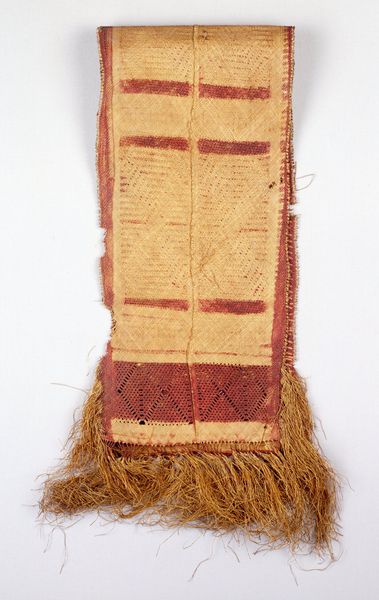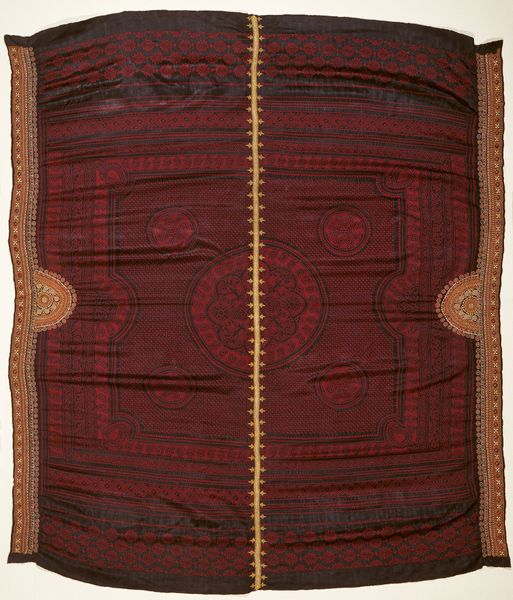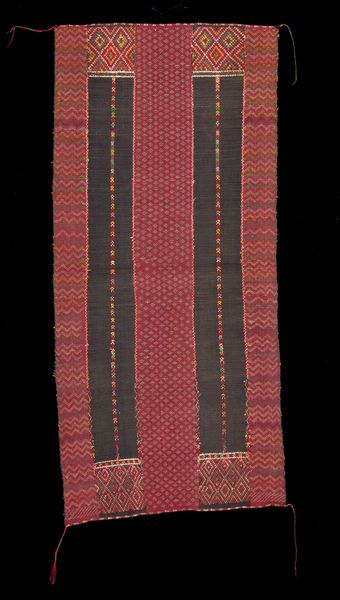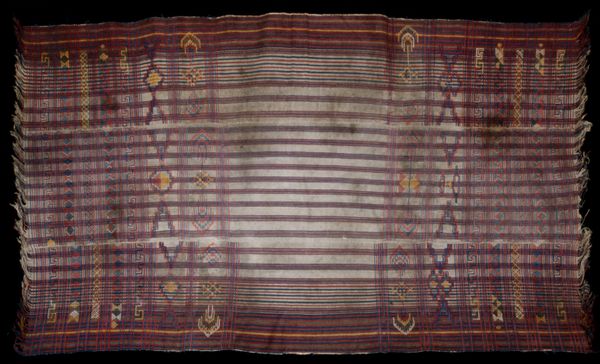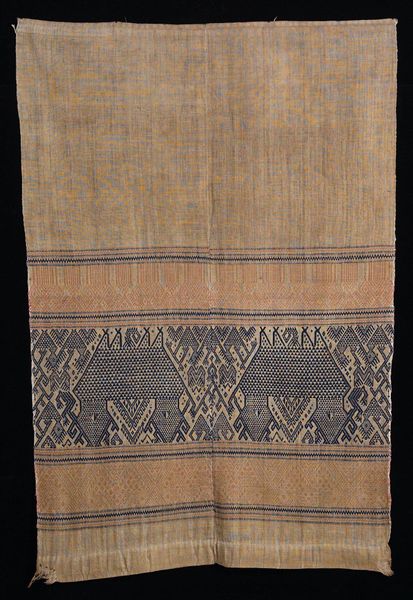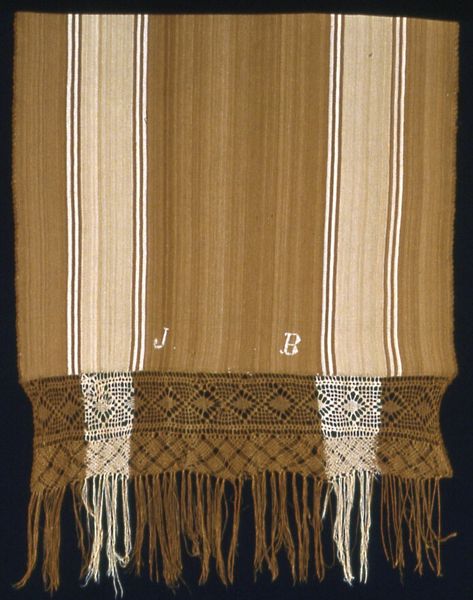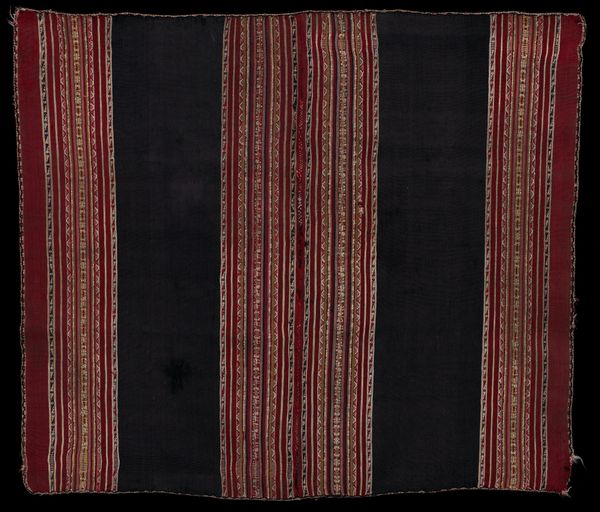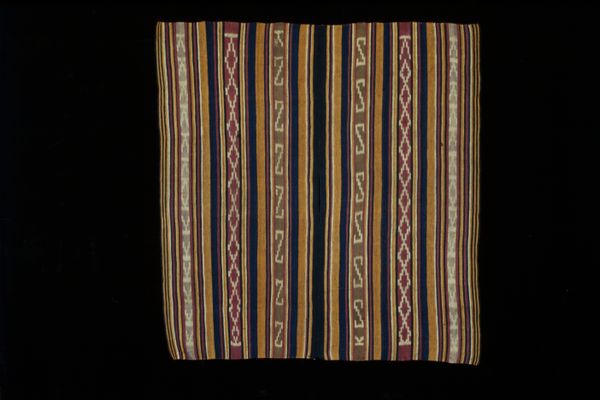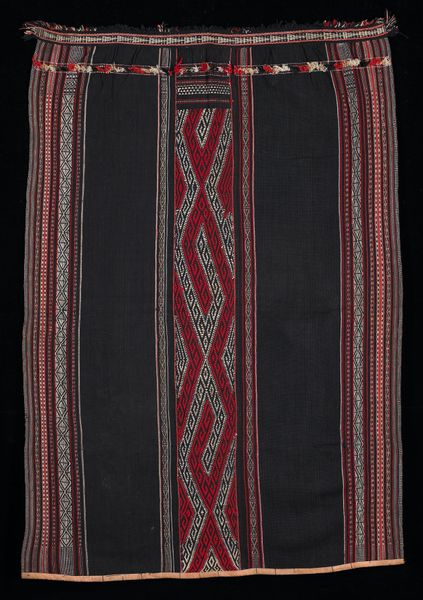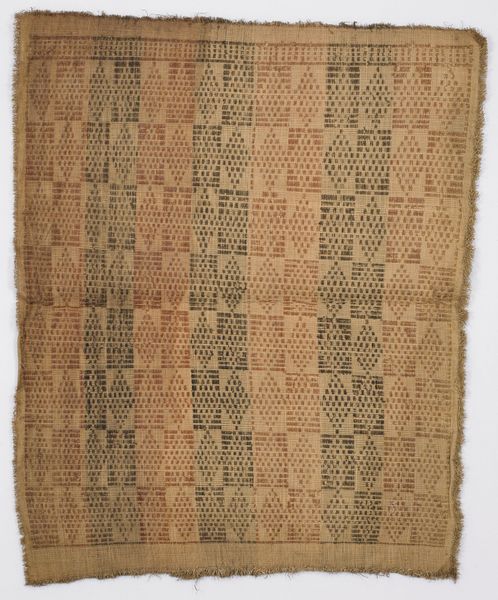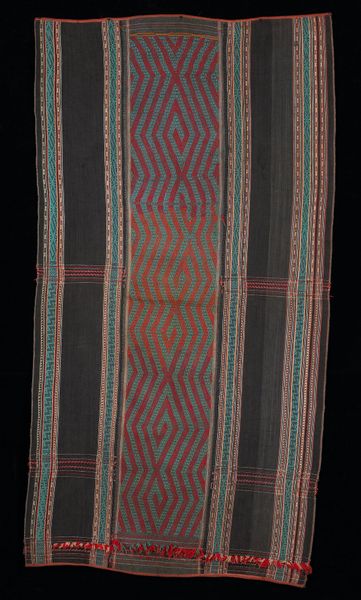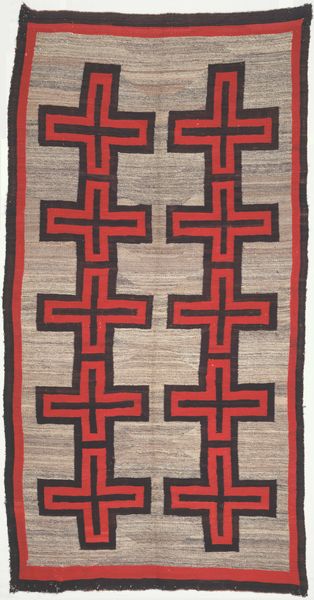
textile
#
african-art
#
pattern
#
textile
#
geometric pattern
#
abstract pattern
#
repetitive shape and pattern
#
geometric
#
intricate pattern
#
pattern repetition
Dimensions: 30 3/16 x 37 1/4 in. (76.7 x 94.6 cm)
Copyright: Public Domain
Editor: This textile, titled *Prayer Mat*, is Sakalava and dates to around the 20th century. The stripes and geometric motifs create a somewhat serene visual rhythm. What strikes me is how these shapes resonate, like ancient echoes in the design. What can you tell me about it? Curator: Indeed, its simplicity carries deep echoes. The geometric patterns, especially those step-like forms in the center, can be seen as symbolic mountains, or even stylized ancestral figures. They recur across cultures as pathways between the earthly and spiritual realms. Editor: That’s interesting. I was just seeing abstract shapes, but thinking about it symbolically does make a lot of sense given it's a prayer mat. Curator: Consider how repeated patterns become ingrained in a culture's visual vocabulary. Here, the arrangement of vertical stripes evokes structure, stability... even continuity with generations past. What feelings arise for you looking at these symbols arranged this way? Editor: A feeling of groundedness. The repetition does create a sort of meditative quality. And knowing it is Sakalava adds a specific cultural weight. It goes beyond mere aesthetics, doesn’t it? Curator: Precisely. These aren't arbitrary forms; they’re visual carriers of memory and belief. To see the mat is to access, in a small way, the cultural psyche that birthed it. Editor: I hadn't thought of it that way, as a cultural carrier. I appreciate understanding the role symbolism plays in creating meaning. Curator: And I’m reminded of how simple shapes can be incredibly powerful across time.
Comments
minneapolisinstituteofart almost 2 years ago
⋮
Praying to God five times a day, Muslims make use of their “portable mosques”—prayer mats like this raffia version from the Sakalava people of Madagascar, the large island in the Indian Ocean off the coast of East Africa. Its design repeats the outline of the Arabian-inspired mihrab, the niche in mosques indicating the direction of Mecca, while its ikat tie-dye technique originated in Indonesia.
Join the conversation
Join millions of artists and users on Artera today and experience the ultimate creative platform.
